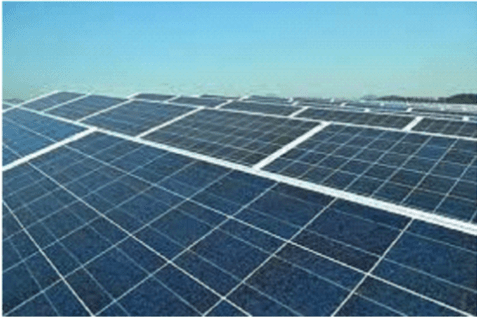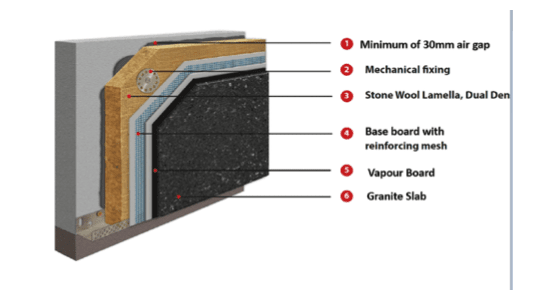4 BENEFITS OF WALL CLADDING YOU PROBABLY DIDN’T KNOW
Wall cladding is a skin or insulation on the wall of a building and interior space. The word cladding means layering a material over another material. Wall cladding is used on buildings to reduce the thermal degree in the interior space and protect the building from adverse effects of climatic conditions and ageing.
WHY IS GRANITE USED FOR WALL CLADDING?
Wall cladding has become a popular choice for moderations in interior walls and exterior. Wall cladding is done using different materials like natural stone, wooden panels, glass or mirror, vinyl, aluminium and artificial stones. Even so, natural stone always comes as a first preference due to its good adaptation capability. The best choice for wall cladding among natural stones is granite, as they have good properties to resist devastating conditions in a measurable unit than other natural stones like marble, limestone and sandstone. Granite resists moisture and it increases the mechanical strength of the structure. It also acts as a thermal insulator and has a good sound absorption property which makes it an excellent choice for exterior walls.
Now let’s see what are the key benefits of using granite for wall cladding
BENEFIT 1: STRUCTURAL STRENGTH AND DURABILITY
Granites are the most preferred stones when it comes to wall cladding. The main reason why people often choose granite is its hardness and resistance properties. Wall cladding offers a good structural strength to buildings. On tower buildings, it is always better to use a sturdy stone like granite for wall cladding, especially on exterior walls. Granite protects the cement wall and prevents the formation of cracks in a thermal environment. Un-finished or finished granites can be used on walls as they resist moisture better than other natural stones. Granite also doesn’t fade upon the exposure to UV- rays. Granite is considered as an auspicious stone and is used in temple structures that are built to last for eternity. The Brihadeswara Temple located at thanjavur, TamilNadu is one such structure that proves the durability of granite.
BENEFIT 2: SUSTAINABLE CONDITIONS
Along with modernisation, it is vital that we focus on building a harmonious relation with our ecosystem. We are living in a world where everything is in the process of being sustainable. Commercial projects, these days, are working on energy-efficient methods. Now let’s understand what role does granite play in these sustainable projects. Granite has the efficiency to adopt heat and therefore are used in solar plates, which are installed on roofs to generate electricity. Granites also act as thermal insulators when used in wall cladding for interior and exterior walls. The incident light from the sun falling on a building in the morning and afternoon emits thermal energy which is stored in between the gaps of wall cladding. This energy will then act as a natural heater during night in cold areas. Even though they are mined from mother earth they don’t cause any disturbance to the environment. Using mined blocks for wall cladding offers a wide range of advantages like eliminating the use of paints and shielding the soil from possible damage that could arise as a result of the deterioration of man-made panels.
Fig 1. Granite solar cell, Cladon blue

Fig 2. Granite Slab used as thermal insulator on exterior or interior wall
BENEFIT 3: AESTHETICS
When it comes to the aesthetic appeal of a building, there is nothing that can add a touch of elegance to the building better than a natural stone like granite. Granites are the most commonly used material for wall cladding. They come in different finishes like sawn, honed, polished and flamed. They provide an elegant and seamless look to tower projects. Katti-ma, as a proud quarry owner, offers natural stones of different colours like red granite, blue granite, black granite, grey granite and white granite. We have also worked on multiple tower projects with our wide variety of stones.
BENEFIT 4: MAINTENANCE
Maintenance is the main element of all types of projects. Only a well-maintained material can stay durable. That’s why you should always choose the right material for your interiors and exteriors. It’s proven that granite is the best option available for wall cladding in the market. Granite has amazing properties that make it durable. The stone adapts well to all weather conditions and doesn’t fade easily. Its hard surface protects it from abrasions. The maintenance is also a very simple process. The walls are usually washed with a pressure washer and in rainy areas, nature does the job for you.
INSTALLATION GUIDE FOR WALL CLADDING
⦁ Measurement
The first step in the installation process is to measure. The area on which the granites are to be installed is measured and the stone requirement is calculated accordingly. The area is calculated in square feet or square metre for flat surface by multiplying the width and the height. The area of windows and door jams are calculated in running feet or running metre.
⦁ Solid foundation
The foundation is a highly considered factor while installing a stone cladding surface. It’s advised to construct the building with brick or concrete. The stone can be installed on the building surface in three different ways. The first method is using adhesive to stick them directly on the wall. The second method is creating an insulator layer supported with heavy duty aluminium clamps. The third method is directly clamping with a heavy holding clamp on the wall with a minimum of 30mm air gap. In case the foundation is an existing structure, it must be cleaned, levelled, and reinforced.
⦁ Prepare the surface
The surface preparation has to be done before installation. For the first method, the wall is made even and rough which gives a good bonding strength and in the same process all the contaminating materials like paint and wax oil are removed. In the second and third methods, the clamps are bolted to the wall and for the same, the wall should be made smooth and painted with a primer to avoid rust of fasteners and bolts.
⦁ Prepare the stone layout
The stones to be installed are kept ready and their arrangement is also planned in advance by variations denoting either of V1, V2, V3 and V4. Based on the method used to lay the stones on the wall, the stones are arranged on the ground based on their size, texture, thickness and colour.
⦁ Quality adhesive/ Clamps
The quality of the adhesive is very important for the bonding of the stone with the concrete wall. There are several stone adhesives available in the market. If the right adhesive is not chosen, there is a chance of the material losing its adhesive strength and falling apart over a time period. A notched trowel is used to apply the adhesive to the back of the stone. The adhesive is evenly spread on the stone and is then pressed firmly against the wall.
For the clamping process, the clamps should be of aluminium base to avoid rust conditions, the fastening screws should be made of stainless steel.
The layering method should always start from the left or right corners towards the centre of the wall. To check the wall calibration, use spirit level and check if the cladding is vertically and horizontally equal.
⦁ Grouting
Once the stone cladding is installed, the gaps need to be filled to avoid moisture and contaminants. There are two types of grouting one is epoxy grouting and the other is gypsum grouting. Epoxy grouting is recommended for exterior wall cladding as it prevents moisture and water from entering the gaps. The gaps are cleaned and the grout is filled with matching cladding stones. Let the grout dry and before it hardens make sure the joints are cleaned for excess material with a scraper and a striking stick.
⦁ Finish
The final step is to dust the entire area and clean the excess grouting. The next process is to apply a good quality sealer to ensure the durability of the stones. Sealing is essential for exteriors exposed to humidity and moisture or bathrooms with high humidity.
